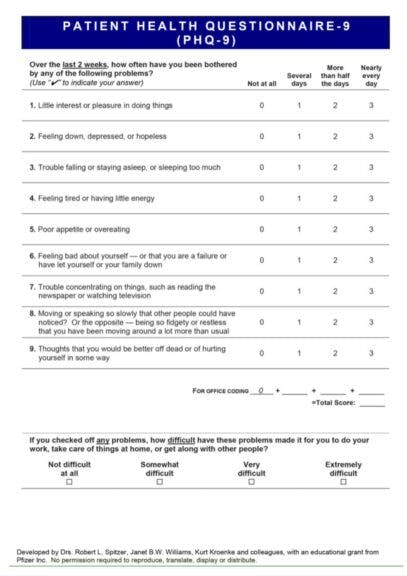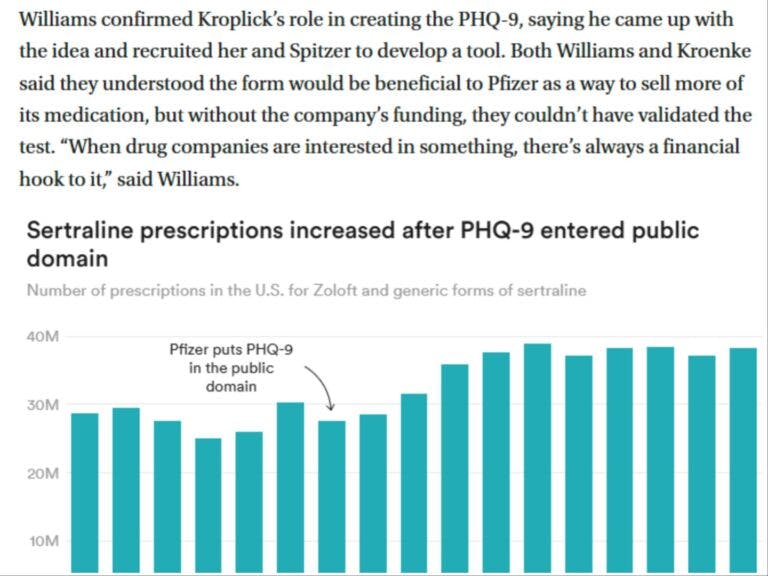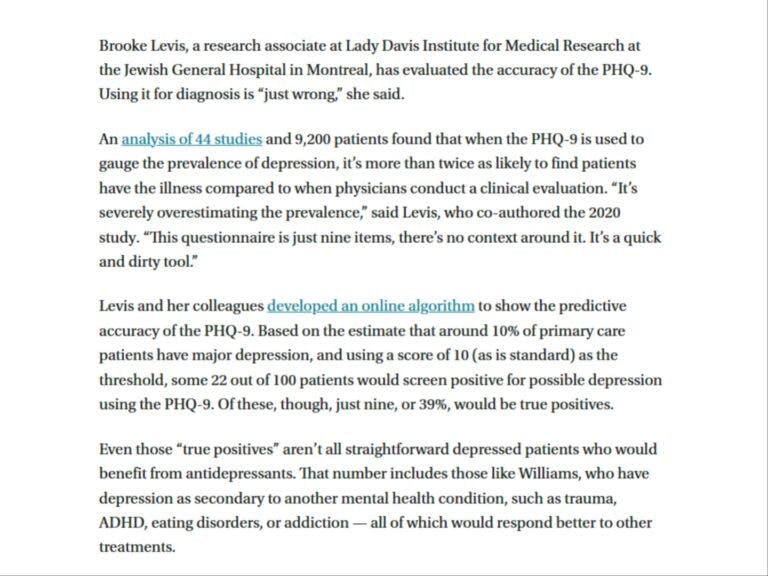One of the ironies of the medical community is that, at a superficial level, “conflicts of interest” are taken very seriously. But most of the time — if you look just an inch below the surface — the most obvious and severe conflicts of interest are routinely ignored. There are all sorts of guidelines about how physicians can’t directly take cash from drug companies in order to prescribe certain medications, for example. But at the same time, it’s completely fine for Big Pharma to hire doctors as, say, consultants or speakers. And then if those doctors, in turn, happen to prescribe a lot of drugs from Big Pharma, who’s to say there’s any connection?
We saw something similar during COVID. Every medical journal is supposed to inform readers about conflicts of interest that exist in any of their articles. And yet, when every single virologist who was conducting dangerous bat experiments in Wuhan wrote that infamous letter in “The Lancet” explaining that this new virus definitely didn’t come from their dangerous bat experiments in Wuhan, there was no disclaimer at all. Instead, virtually everyone in the scientific community took that letter as gospel. After all, why would the people involved in making a Frankenstein virus ever lie about their role in creating it?
This kind of corruption happens all the time in medicine, but it’s rarely discussed because the pharmaceutical industry happens to be one of the biggest advertisers in the media. Again and again, conflicts of interest are brushed over, or ignored completely. One of the most disturbing examples, by far, is the way that the medical community developed something called “PHQ-9.” Even if that doesn’t ring a bell, there’s a good chance you (or your child) have had a run-in with PHQ-9 at one point or another. This is probably one of the most scandalous untold stories in medicine.
Essentially, PHQ-9 is a nine-item test that’s used to measure whether someone might need psychiatric treatment, including medications. It’s used by school psychologists and nurses, as well as doctors’ offices all over the country. Pfizer developed it, then released it into the public domain so that it would spread throughout the medical community. Here’s what the test looks like:

Credit: Dr. Robert L. Spitzer, Dr. Janet B.W. Williams, Dr. Kurt Kroenke and colleagues, with an educational grant from Pfizer Inc.
It’s a list of questions asking patients whether they’ve experienced a handful of negative symptoms over the last few weeks. They have to rank the frequency of these symptoms as “not at all,” “several days,” “more than half the days,” and “nearly every day.” Possible negative symptoms include: “Little interest or pleasure in doing things … Trouble falling or staying asleep, or sleeping too much. … Feeling tired. … Poor appetite or overeating. … Trouble concentrating. … Moving or speaking so slowly that other people could have noticed.”
Typically, if 5 of these symptoms are present for “more than half” of the past 14 days, then you’re diagnosed with depression and handed an SSRI. It’s supposedly a reliable system. But looking over those symptoms, you might have noticed a problem already: Many of these symptoms don’t necessarily have anything to do with a mental health condition. At various points in their lives, every human being alive will report that they’re having trouble sleeping, or feel tired, or have a bad appetite. That’s particularly true for children, as well as adults going through stressful periods in their lives.
WATCH: The Matt Walsh Show
For example, a woman named Callie Williams was given a PHQ-9 test as part of a prenatal appointment with an OB-GYN in 2016. Williams was recently married, and she was a brand-new stepmother, which naturally made her feel somewhat overwhelmed. After filling out the form, she was told she was “depressed,” and that she needed to take Zoloft. When she asked for a more detailed mental health examination, she was denied. She spoke to STAT News about her experience. Here’s how they reported on what happened next: “If Williams didn’t take Zoloft, the doctor said, she would be marked as non-compliant. She was unnerved by the threat, so agreed to take the medication. It didn’t help. ‘It was very easy to rely on the checked boxes,’ said Williams, who lives in Sacramento, California. ‘I didn’t see an effort to dig any deeper, even when I was asking for that.'”
So here we have an adult woman who was pressured into taking psychoactive medication because of a survey that’s obviously imprecise, by design. And if you’re the inquisitive type, that might lead you to ask a very basic question: Who exactly wrote this survey? Is it possible that the creator of this survey could potentially have a vested interest in getting people to take psychoactive drugs?
As you’ve probably guessed, indeed, there is a major conflict of interest at work here. But it’s actually a lot worse than you’re probably assuming. And very soon, courtesy of the Democrat Party, this particular conflict of interest has the potential to impact the lives of millions of children.
We’ll start at the beginning of the story, which for SSRIs, is the early 1990s. At that point, if you can believe it, SSRIs were not popular among most doctors. They didn’t want to prescribe the drugs because they were untested and came with a lengthy list of severe side effects. It’s the exact opposite of today’s status quo, where SSRIs are distributed like candy. But Pfizer, which was producing the SSRI known as Zoloft (a competitor of Prozac), had a plan to change that. They were going to find a way to make psychiatry a matter of “primary care,” instead of a specialty that involved far fewer patients. And a big part of that plan involved funding the creation of the PHQ-9 test. Without Pfizer’s funding, which amounted to hundreds of thousands of dollars, there would be no PHQ-9. Everyone involved in the project has now admitted that.
But the PHQ-9 was not the brainchild of a hardworking, earnest Pfizer scientist who wanted to ensure the most accurate diagnostic test he could come up with. In fact, it wasn’t even the brainchild of an MD. Instead, it was the creation of a marketing guru named Howard Kroplick. Kroplick is not a doctor or a scientist. He has an engineering degree from Stony Brook University and a MBA from the Wharton School at the University of Pennsylvania. Immediately after graduating from Wharton, he went to work at Pfizer. And very quickly, he became one of the most influential figures in modern medicine. (Kroplick is the reason that Viagra ads don’t mention the word “impotence.” They don’t want to insult or demean their potential customers).

Again, here is what STAT News reports:
Janet Williams (a Columbia University professor) confirmed Kroplick’s role in creating the PHQ-9, saying he came up with the idea and recruited her and [renowned psychiatrist Robert] Spitzer to develop a tool. Both Williams and [primary care doctor] Kroenke said they understood the form would be beneficial to Pfizer as a way to sell more of its medication. … The potential conflict of interest around the PHQ-9’s development is ‘a good point,’ said Kroplick. But he said Pfizer didn’t interfere with the research.
That last part may be true. It’s quite possible that Pfizer didn’t explicitly state that these doctors (and the marketing guy) had to come up with a test that would result in doctors over-prescribing their product. But the whole point of a conflict of interest is that, even without this kind of explicit quid-pro-quo, everyone understands what needs to be done. There was clearly a strong incentive here for these doctors, along with Pfizer, to present the PHQ-9 as a diagnostic tool — not merely a survey. And it appears they did exactly that. A paper published in 1999, states, “The PHQ is the first entirely self-administered diagnostic instrument designed for use in primary care.” On their website, as STAT News pointed out, the PHQ is described as both a “screener” and as a “diagnostic tool.”
But it’s not particularly useful, for either purpose. Here’s the title of a paper published just five years ago: “Patient Health Questionnaire-9 scores do not accurately estimate depression prevalence.”
Researchers looked through dozens of studies involving PHQ scores. Here’s what they found:

“An analysis of 44 studies and 9,200 patients found that when the PHQ-9 is used to gauge the prevalence of depression, it’s more than twice as likely to find patients have the illness compared to when physicians conduct a clinical evaluation.” By other estimates, including one from the psychiatrist Nicolas Badre, up to two-thirds of the results from this test are false positives.
To recap: Big Pharma wanted to market an SSRI. They hired a marketing guy to invent a survey that resulted in mass over-diagnosis of depression, which could then be treated by SSRIs made by Big Pharma. And it worked. Within a decade, SSRIs started printing billions of dollars every year. And through all of this, no one has any idea how SSRIs work, or if they work at all.
In fact, a study released just a few years ago, from researchers in Saudi Arabia and published in the peer-reviewed journal PLOS One, found that: “The real-world effect of using antidepressant medications does not continue to improve patients’ health-related quality of life over time.” And as we’ve discussed many times, even establishment scientists have abandoned the notion that depression is somehow related to serotonin levels.
With this recent history in mind — which no one, outside of the niche publication STAT News, has bothered to cover — it should be apparent that no one in their right mind would try to expose millions of children to these kinds of phony diagnostics. Mental health screening is an unreliable and fraudulent tool that’s been used to justify the over-prescription of powerful psychoactive medications. At a minimum, it’s extremely error-prone, even when you’re talking about adults who have voluntarily gone to the doctor to seek treatment. So very clearly, we should be reducing the use of these kinds of broad diagnostic tests as much as we possibly can. That’s especially true when there’s no clear reason to make someone take one of these tests because they’re not complaining of any problem. The risk of a bad diagnosis is astronomical.
But the Democrat Party isn’t limiting the use of these tests. Instead, they’ve just announced a plan to drastically expand these diagnostics, and to compel children to take them (at least, unless parents go through some kind of opt-out procedure). This doesn’t seem to have gotten very much attention, but I think it’s one of the most horrifying policies in modern American history. The state of Illinois is now demanding that children — beginning in the third grade — undergo annual psychiatric evaluations. In other words, even if there’s nothing wrong with him, a third-grader will probably be asked the same kind of questions I just ran through.
As of right now, Illinois hasn’t announced the specific testing they’re going to implement, but it stands to reason it’s going to resemble — if not replicate — the test that Pfizer has put out in the public domain. After all, that’s the gold standard. Children will presumably be expected to tell their school psychologist whether they’ve been having trouble focusing, or sleeping. Completely normal childhood behaviors and feelings will be re-classified as symptoms of major mental health disorders. Watch:
Credit: NBC Chicago/YouTube.com
If you listen to Republicans’ reaction to this plan, you’ll hear generic claims about “government overreach” and so on. But the actual problem is much more straightforward, and it needs to be spelled out: The point of these annual screenings is to ensure that they drug as many children as possible with psychoactive medications, so that they become loyal customers of Big Pharma for life. And of course, they’ll also become profoundly unhappy people, which accounts for roughly 100% of the Democrats’ voter base. So it’s a win-win for politicians like JB Pritzker, and for Big Pharma.
If Big Pharma was able to prescribe millions of SSRIs to adults based on bogus tests that were invented by Pfizer’s marketing department, then there’s no doubt that children in public schools in Illinois will be extremely easy targets — and not just for SSRIs. We all know that ADHD medications, puberty blockers and cross-sex hormones will be distributed to minors as well, as a result of this program. These are drugs that aren’t simply unnecessary. They’re actively harmful for children. In the case of ADHD drugs, even the so-called “experts” in the field have admitted as much. The New York Times, of all places, just published a lengthy article on the topic, with the headline, “Have We Been Thinking About A.D.H.D. All Wrong?”. But the drugs aren’t being pulled from the market. No one’s being prosecuted. Instead, the pill-pushers are coming up with new tactics to convince more children to take these drugs, and politicians in Illinois — many of whom take a lot of money from Big Pharma — are happy to oblige.
This is an unmistakable escalation in the ongoing effort to medicalize normal human thoughts and behaviors, and to corrupt the lives of children for financial and political reasons. For decades the school system has been a conveyor belt feeding kids to Big Pharma. Now the conveyor belt will work at warp speed. It will begin in Illinois, but it won’t end there. Before long, the only children who will be spared this sales pitch — the only ones who will be insulated from this heavy-handed effort to drug them — will be the children who don’t attend public school. You probably didn’t need another reason to keep your child away from a public school, but in case you did, here it is. If these people can pressure adults into taking drugs they don’t need, they can do it to your children as well. And with this new law, some of the most prominent Democrats in the country are making it abundantly clear that, one fake “diagnostic test” at a time, that’s exactly what they intend to do.

Continue reading this exclusive article and join the conversation, plus watch free videos on DW+
Already a member?

.png)
.png)

